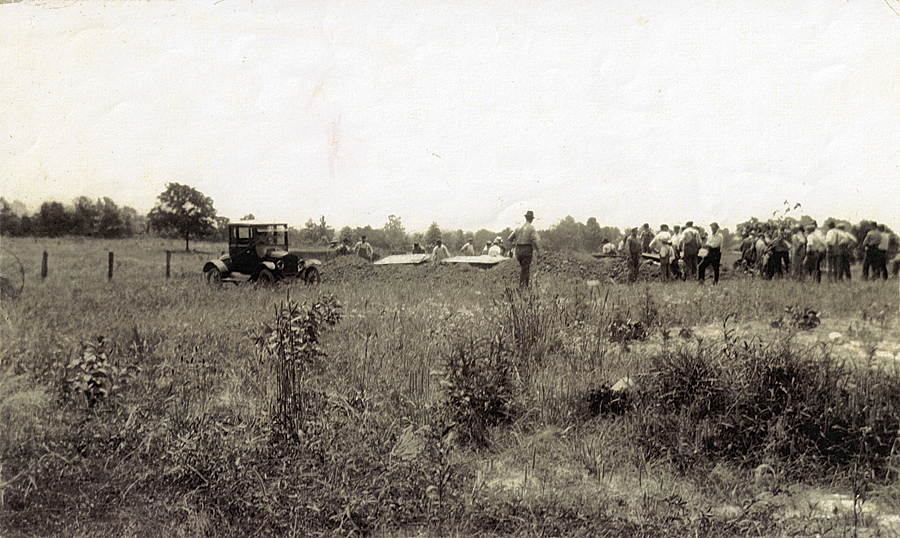
In April of 1922, the United Mine Workers of America (UMWA) went on a nationwide coal strike. Eight weeks into the strike, W. J. Lester, owner of the Southern Illinois Coal Company, Williamson County, Illinois, having already released the union workers from their duties, hired nonunion labor and heavily armed guards from Chicago. (Whether these men knew they were strikebreakers or not is still a matter of debate.)
Union miners from as far as Kansas, Indiana, and Ohio had arrived to protest earlier in the week. By June 21, a steady stream of gunfire had been exchanged between the two factions. By nightfall, two UMWA men had been killed.
Miners, farmers, and other locals were infuriated. By the morning of June 22, it was estimated that 1,000 armed men had advanced on the mine. Realizing there was no alternative, the nonunion men raised a white flag of surrender. With promise of safe passage out of the county, the men were led from the Lester Strip Pit to a wooded area about two miles away, known as the Power House Woods, where the killing spree began.
Over the next two days, 23 men were killed in Williamson County and on the streets of Herrin, Illinois. It was the largest mass murder of nonunion labor in the history of America in an event that would become known around the world as the Herrin Massacre.

